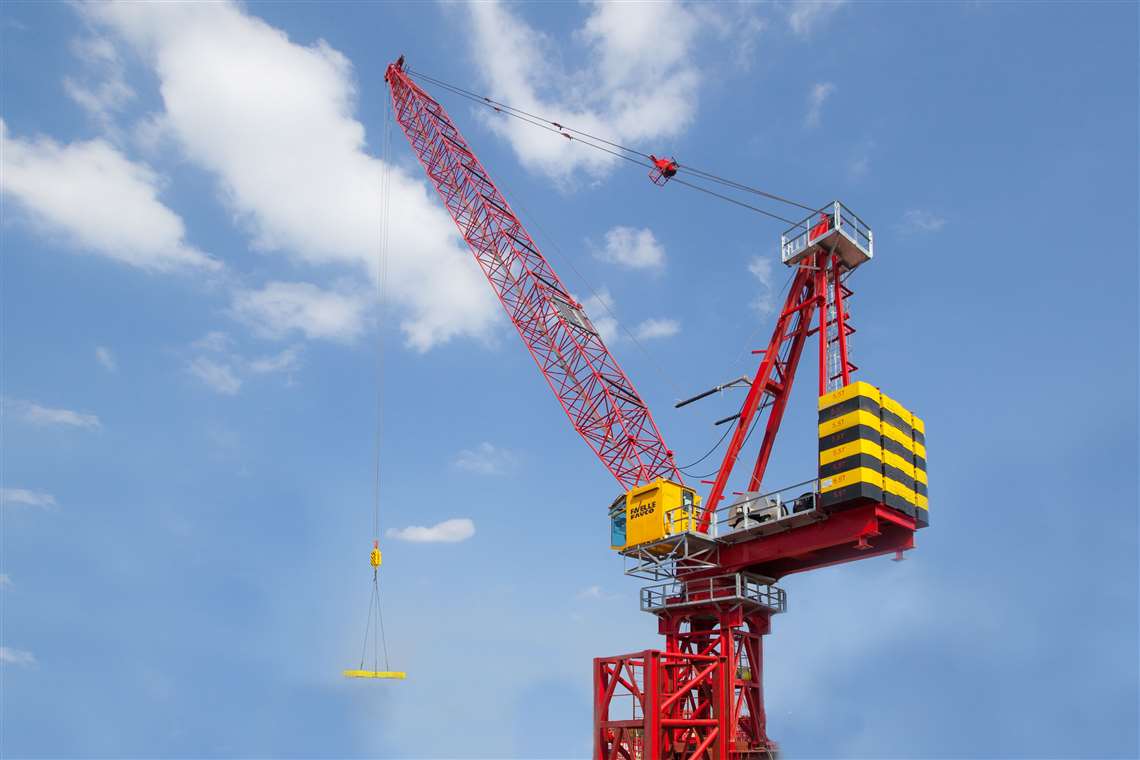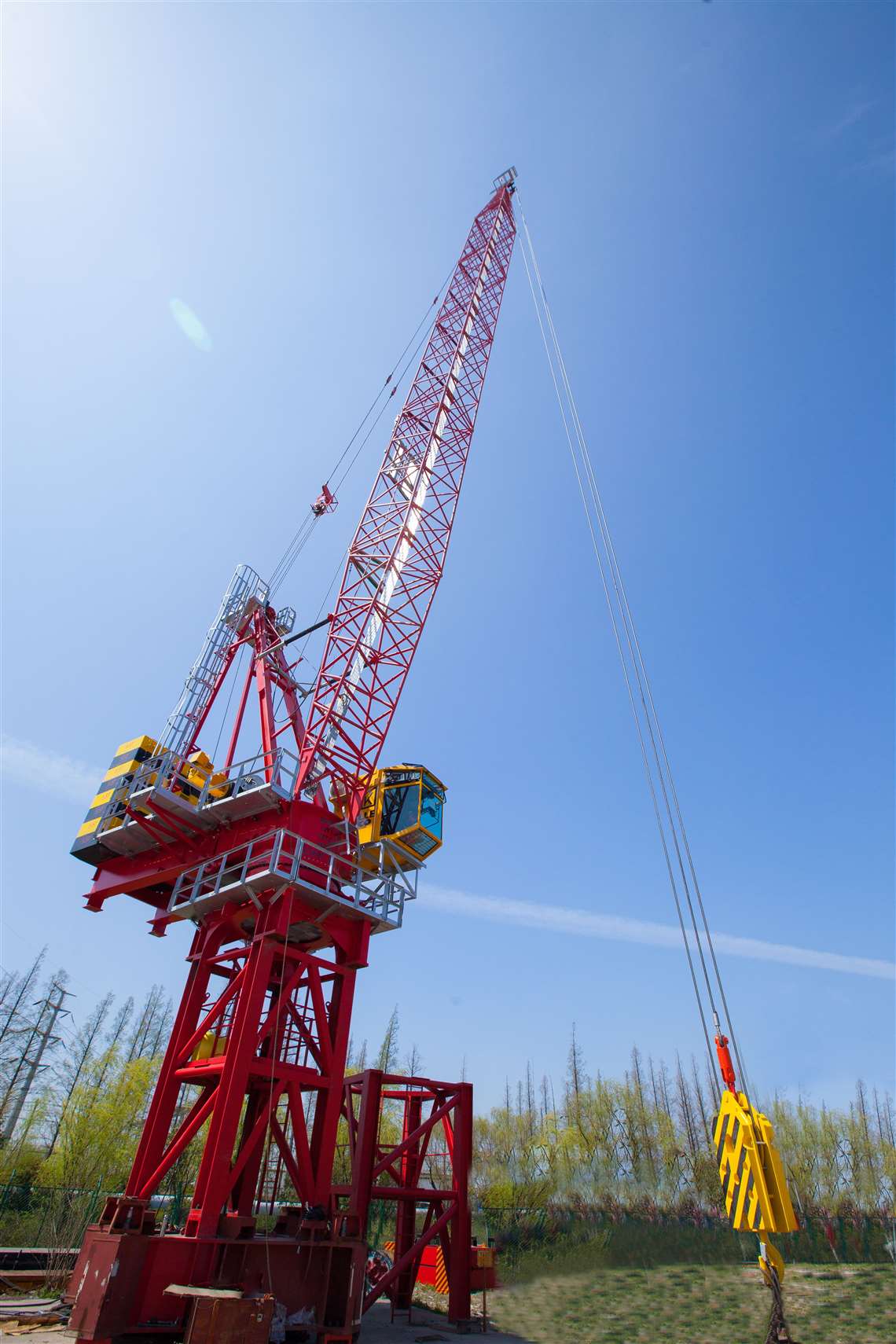New 36 tonne luffer from Favco
26 April 2021
 Favelle Favco’s new MK380F-H12 luffer lifts 36 tonnes on three falls of rope
Favelle Favco’s new MK380F-H12 luffer lifts 36 tonnes on three falls of rope
Favelle Favco Cranes has introduced a new luffing jib tower crane model, the MK380F, for general construction applications.
The new electric F-series model is based on the well proven M-series tower crane. It breaks from tradition, however by having an electric drive instead of an hydraulic open gear winch design. The MK380F-H12 uses an 85 kW, 12 tonne line pull AC hoist winch from Favelle Favco sister company Krøll.
On three falls of rope it has a 36 tonne safe working load and can also be configured with one or two falls. On two falls of rope the 12 tonne winch version lifts its 24 tonnes out to a radius of 17.5 metres. The old M380D (now superseded by the M390D) only ran with one or two falls and was limited to a 32 tonne SWL.
Similarly, the new model can have a boom up to 73.4 metres long, whereas the standard M380D had 64 metres. Maximum working radius of the new model is 70.0 metres.
The frequency converter drive and Siemens controls on the new model need less current on start up, offer smooth power delivery and have infinitely variable speed, Favelle Favco said. On a single fall of rope the maximum hoist winch speed is 37.6 metres a minute under full load. With little or no load it can reach 131.7 m/min. The MK380F is available in 12 and 16 tonne hoist winch versions. The 16 tonne version, the MK380F-H16, has a 120 kW winch and does 32 tonnes on two falls of rope.
Existing Favelle Favco tower sections, transition stools and climbing systems can be used. Maximum freestanding height on the standard type 392 mast sections is 48 metres. Larger tower combinations with transition towers and reinforced sections will give greater freestanding height.
The new model is ready and available for delivery.
 An 85 kW electric winch from sister company Krøll features on the new Favelle Favco MK380F-H12
An 85 kW electric winch from sister company Krøll features on the new Favelle Favco MK380F-H12
POWER SOURCING GUIDE
The trusted reference and buyer’s guide for 83 years
The original “desktop search engine,” guiding nearly 10,000 users in more than 90 countries it is the primary reference for specifications and details on all the components that go into engine systems.
Visit Now
STAY CONNECTED




Receive the information you need when you need it through our world-leading magazines, newsletters and daily briefings.
CONNECT WITH THE TEAM













